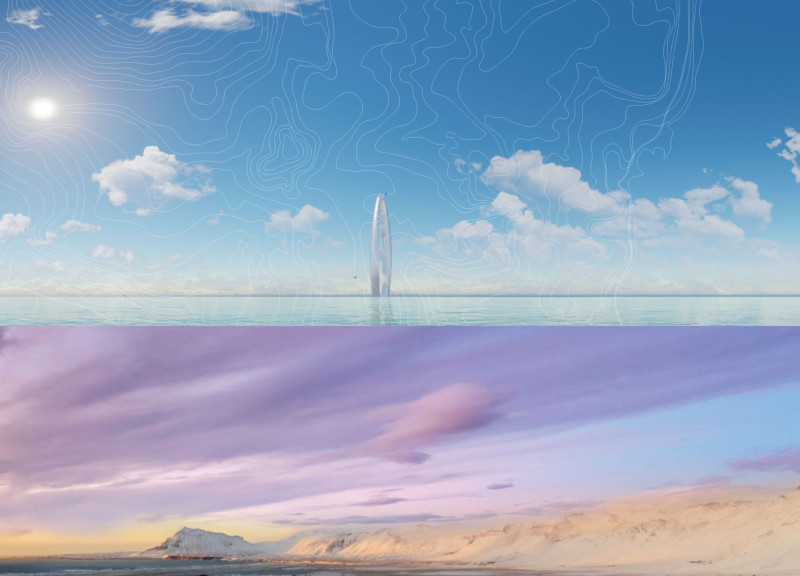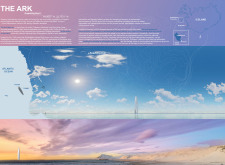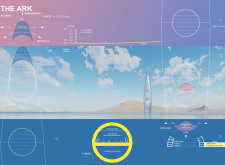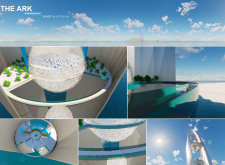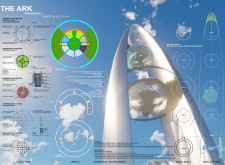5 key facts about this project
The Ark is situated in the dramatic landscape of Iceland’s Snæfellsnes Peninsula, near the Snæfellsjökull glacier. It serves as a space for exploration and interaction. The design embodies a vision of coexistence among various species—human, animal, plant, and celestial. Inspired by Jules Verne’s *Journey to the Center of the Earth*, the concept focuses on adventure and the potential for living in harmony within an interconnected ecosystem.
Conceptual Framework
The design centers around the idea of breaking down traditional architectural boundaries. It prioritizes fluidity and adaptability, creating a structure that grows from complex multicellular elements. This approach signifies a move away from designs that focus solely on human needs. Instead, it encourages a dynamic relationship with nature, allowing the environment and architecture to influence one another.
Design Characteristics
The form features a noticeable verticality that mirrors the glacier's natural height. Architectural elements reach upward, encouraging occupants to feel connected to both the ground below and the sky above. The layout is designed to promote movement and ease of access. Spaces are arranged to support interaction among different inhabitants, fostering a sense of community in this living ecosystem.
Materiality and Sustainability
Materials play a key role in the construction of The Ark. Concrete provides necessary strength and stability for the structure. Steel is used in the framework, offering flexibility and support. Glass is incorporated in spheres throughout the design, allowing natural light to filter in and connecting occupants visually to the landscape outside. These material choices emphasize the project's commitment to ecological principles.
The Ark goes beyond traditional architectural practices by focusing on relationships between species and their environments. The design invites exploration and creates meaningful connections with nature. With its light-filled spaces and views of the expansive landscape, it encourages occupants to engage with their surroundings and fosters a shared habitat for all forms of life.


